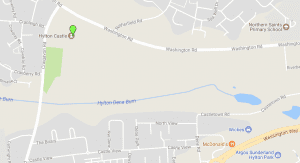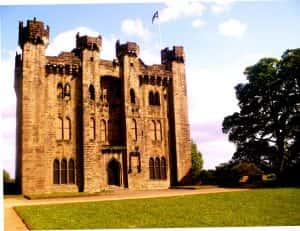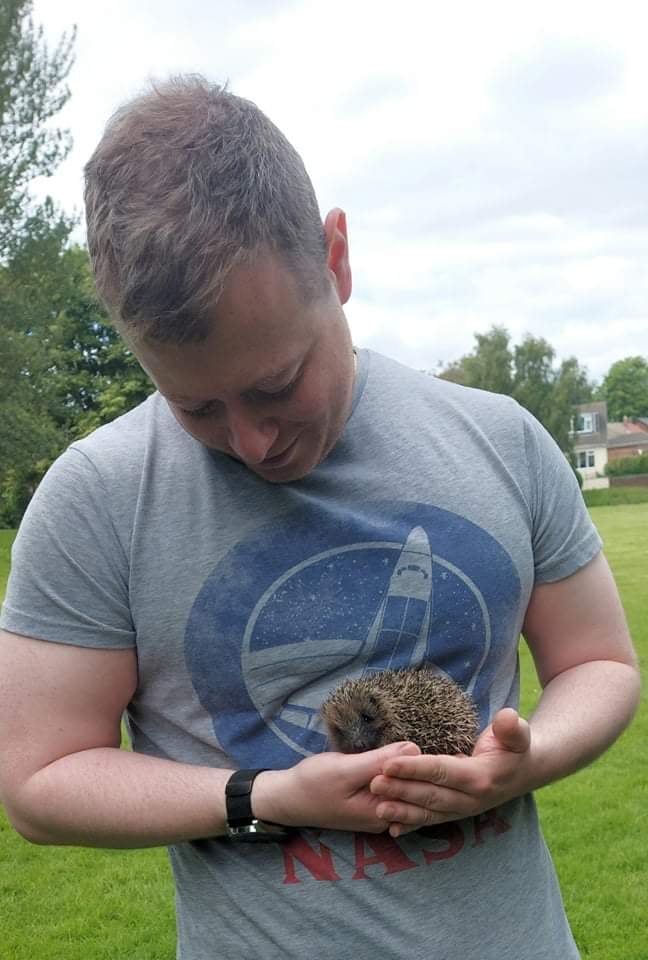Since ancient times, ghost stories have been a prominent fixture in folklore for many cultures around the world. The belief in the existence of an afterlife, as well as manifestations of spirits is widespread.
Here in the North East there are multiple famous places that are said to be the most haunted in Britain. Chillingham castle in Northumberland, is home to at least 6 different ghosts including the ghost of Lady Mary Berkeley.
Whether you believe in them or not, you would have heard countless versions of different ghost stories… but have you heard about the story of the ‘Cauld Lad of Hylton’?Hylton Castle, located on Craigavon Road in Sunderland,  dates back 600 years with the land being owned by the Hylton (formally Hilton) family since the Norman Conquest in 1066. Built as a castle shortly before the 1400s by Sir William Hylton. It now stands as an empty building, currently under construction in an attempt to breathe new life into the historic structure and its surrounding land.
dates back 600 years with the land being owned by the Hylton (formally Hilton) family since the Norman Conquest in 1066. Built as a castle shortly before the 1400s by Sir William Hylton. It now stands as an empty building, currently under construction in an attempt to breathe new life into the historic structure and its surrounding land.

However, no matter how much the structure has changed over years, and the construction it is currently undergoing, one thing remains the same; the story about the ‘Cauld Lad of Hylton’.
The Cauld Lad is said to haunt the grounds of the castle. It is believed that in 1588 a group of local barons gathered for a feast at the castle. The party led to many of the guests becoming drunk, so whilst they slept off their drink, the castles staff had only 6 hours to clean, removing vomit, mopping up urine and lighting scented candle to try mask the disgusting smell before the barons would rise to go on a boar hunt.
As the first of the hungover elite surfaced for breakfast, the staff had been working for up to a total of 48 hours and were criticised for being slow to serve them food. Some of the more experienced staff were conditioned to working these hours but, the younger ones were struggling to keep their eyes open. That included 14-year-old little Roger Skelton.
Hyltons lord, Sir Robert Hylton demanded his horse be saddled in preparation for the hunt, a job to be done by the stable boy roger. Time passes by and Sir Robert became impatient. He went into the stables to discover Roger fast asleep in the hay. The lord then exploded in a fit of rage. He kicked and punch Roger eventually backing him up against a wall. Sir Robert picked up a pitchfork and threw it at little Roger, pinning him to the wall…..
The boy’s body was placed in the hay and covered up, the lord saddled his own horse and told the staff that he had found the stable boy asleep and told him to leave Hylton and never return. Later that night the lord returned to the stable and put the boy’s lifeless body in a sack, then dragged it to a nearby, unused, well and threw the corpse down.
This story is the popular one in the region. Its earned its fame by being featured in many books and even had itself featured in “Mackem Craic”, a local radio drama. James Whitman, a writer on “Mackem Craic” told Word on Wearside, why the Cauld Lad was the perfect tale to recreate on radio:
“We wanted something that was particular to Sunderland because it [Mackem Craic] is in Sunderland, and that’s where the ‘Cauld Lad’ came into it.
Even just the name of it, it just places it on the map, so we were really pleased with that. In particular we also wanted a story that tied to a particular location, so it being tied to Hylton Castle was perfect, and I think everyone likes that sort of story where, you know were passing Hylton Castle you can kind of share that story with everyone, and everyone kind of likes that.”
This is just one of many versions about the tale, but one thing is for certain: it’s historical fact that in 1609 Sir Robert Hylton was tried for murder of Roger Skelton. The baron was found guilty but since the body was never recovered he was later pardoned.
It seems that the ghost of Roger Skelton found this too much and came back to Hylton Castle, heard sobbing and wailing in the dead of night. Witnesses all said that the ghost was naked, earning him the nickname “The Cauld Lad”.
In 1703 the well was excavated and a body of a young boy was found, he was given a proper burial and the number of happenings dramatically decreased. However, even to this very day there are reported sounds of wailings coming from the empty castle at night.
Pearl Saddington, the learning officer at Hylton Castle, has spent numerous occasions at the location, which has led to her having her own experience of its paranormal reputation.
“I was actually standing by the well, although I didn’t know it was the well as it was capped off and I didn’t feel anything but it was exceptionally cold, like really cold, like unnervingly cold and it wasn’t the cold air. Maybe that was my little initiation of the Cauld Lad?”
Today, English Heritage is responsible for the Castle, however as Halloween approaches, maybe the Cauld Lad will come out to make an appearance?…
By Beth King and Yolanda Branch



